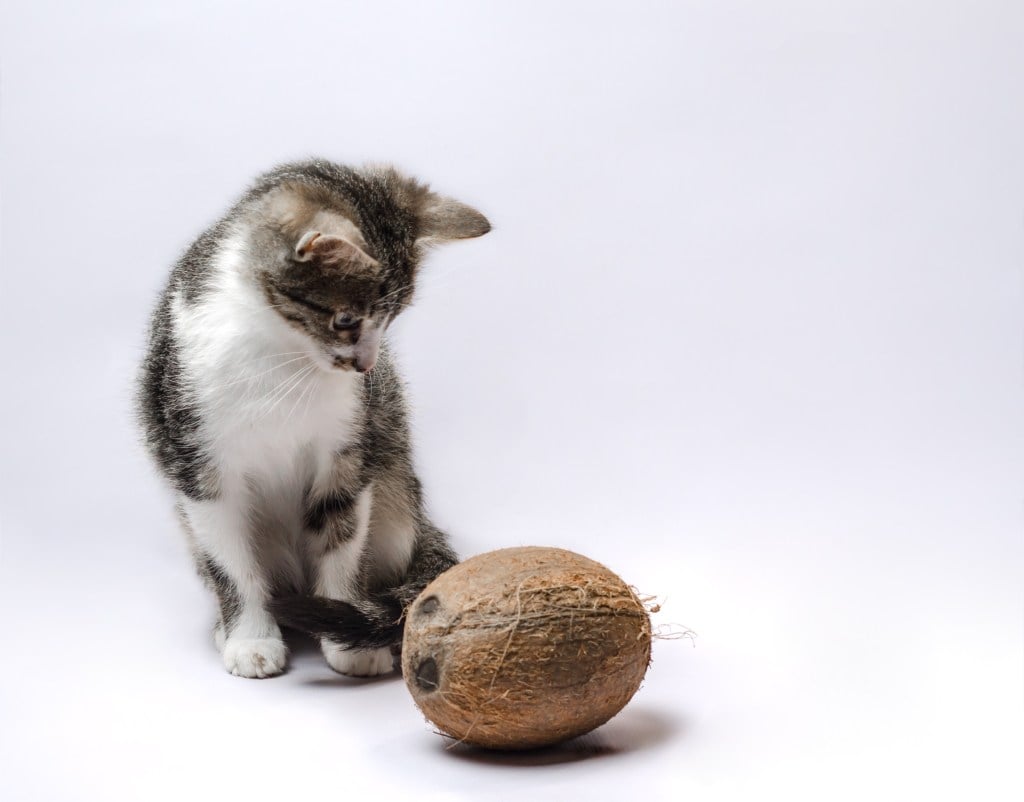Key Takeaways
- Pumpkin is safe for dogs and contains fiber, calcium, iron, and antioxidants.
- Benefits for dogs include digestive health, weight control, and urinary tract support.
- The high fiber content of pumpkins can be a safe hairball remedy for cats.
- Do not feed pets the stem, skin, or pulp of pumpkins.
- Ensure raw and canned pumpkins for pets do not contain sugars or spices.
Table of Contents
Yes, cats and dogs can eat pumpkin. In addition to being chock full of fiber, pumpkin also has high water content, calcium, iron, and antioxidants (Vitamin A, C and E)—all good things for your pet to consume. The three most prevalent health benefits pumpkin gives your pet include:
-
- Digestive Health
As many pet parents know, pumpkin is almost a magical cure-all for digestive upset in pups and kitties. It helps with both constipation and diarrhea, so adding a bit (see portions below) can help alleviate stomach ailments. It’s also rumored to be beneficial in fighting parasites.
- Digestive Health
-
- Weight Control
Because it is high in fiber, pumpkin helps pets feel fuller, longer. Vets recommend the following weight loss tip: reduce their food portion by a third and replace with pumpkin. It’s healthy and tasty!
- Weight Control
-
- Urinary Health
UTIs and bladder health are commonly seen at the vet in both cats and dogs, and while cranberries are the most often nutritional recommendation, pumpkin helps too! The seeds and oils are not just high in essential fatty acids and antioxidants (also good for the coat!), the vitamins and minerals pack a powerful punch in supporting urinary health.
- Urinary Health
The cardinal rules of pumpkin for pets are:
- Don’t feed the stem, skin, or pulp to your pet.
- Don’t serve raw pumpkin or canned pumpkin with spices and sugars.
- Don’t chop up your leftover Jack-O-Lantern. Carving pumpkins aren’t good for eating, and, once carved, can be full of bacteria and mold.
- Make sure your pet has plenty of fresh, clean water when eating pumpkin.
Pumpkin for cats
Pumpkin’s high fiber content has been touted as a safe ‘remedy’ for hairballs. The most you should be feeding your cat is ½ tsp – 1 teaspoon of pumpkin a day. More than that is probably too much fiber for a small animal to handle.
- Fresh pumpkin seeds can be fed to cats, but check with your vet first just in case. Clean and roast the seeds at 350°F for 1 hour. Do not add any sugar, salt, or spices. It is recommended to grind the seeds before adding them to food and start with a very small amount—1/16 to 1/8 teaspoon—to make sure they don’t upset your kitty’s system.
- Fresh pumpkin can be shared with your cat after it’s been baked until soft. Remove the seeds, and allow the pumpkin to cool before feeding. Most cats find pumpkin quite palatable. If your cat doesn’t enjoy the taste, the pumpkin can be mixed into a wet feline diet.
Pumpkin for dogs
If you’ve been feeding your dog a natural or organic dog food brand, there’s a good chance they already have pumpkin in their diet. Follow the same preparation instructions for cats above with one exception: pumpkin seeds do not have to be ground (unless you’re looking to add them to your pup’s regular food). You can simply feed a dog one seed at a time, but remember—no salt, sugar, or spices.
The fun part of feeding pumpkin to your dog is that you can cook up some creative treats! Try starting with No Bake Pumpkin Peanut Butter Balls, Pumpkin Oat Dog Biscuits, or any one of these seven amazing pupkin (pardon us, pumpkin) recipes.
Want to find out more about what dogs can and cannot eat? Check out our comprehensive guide for more information on “What Human Foods Dogs Can and Can Not Eat.”








